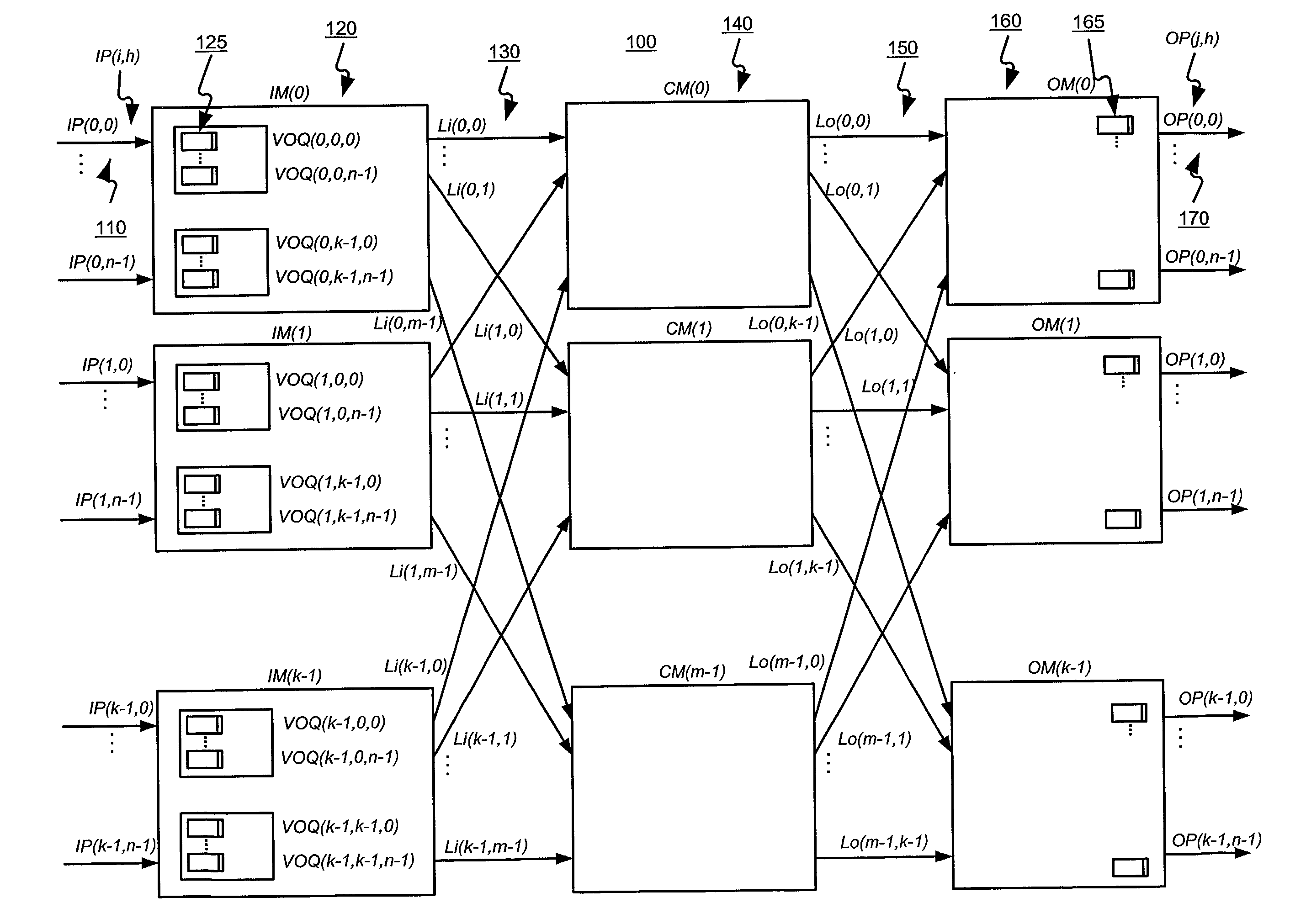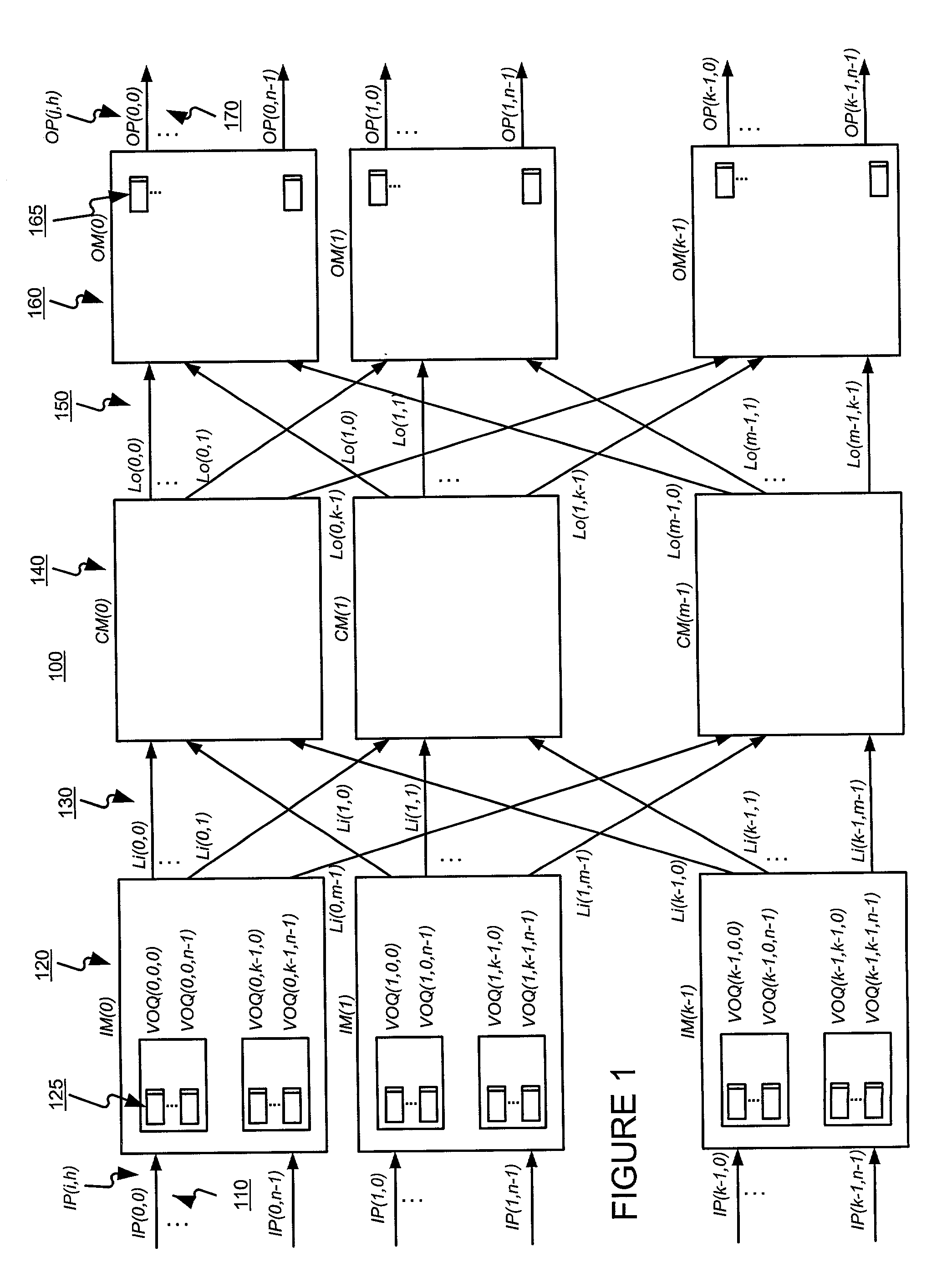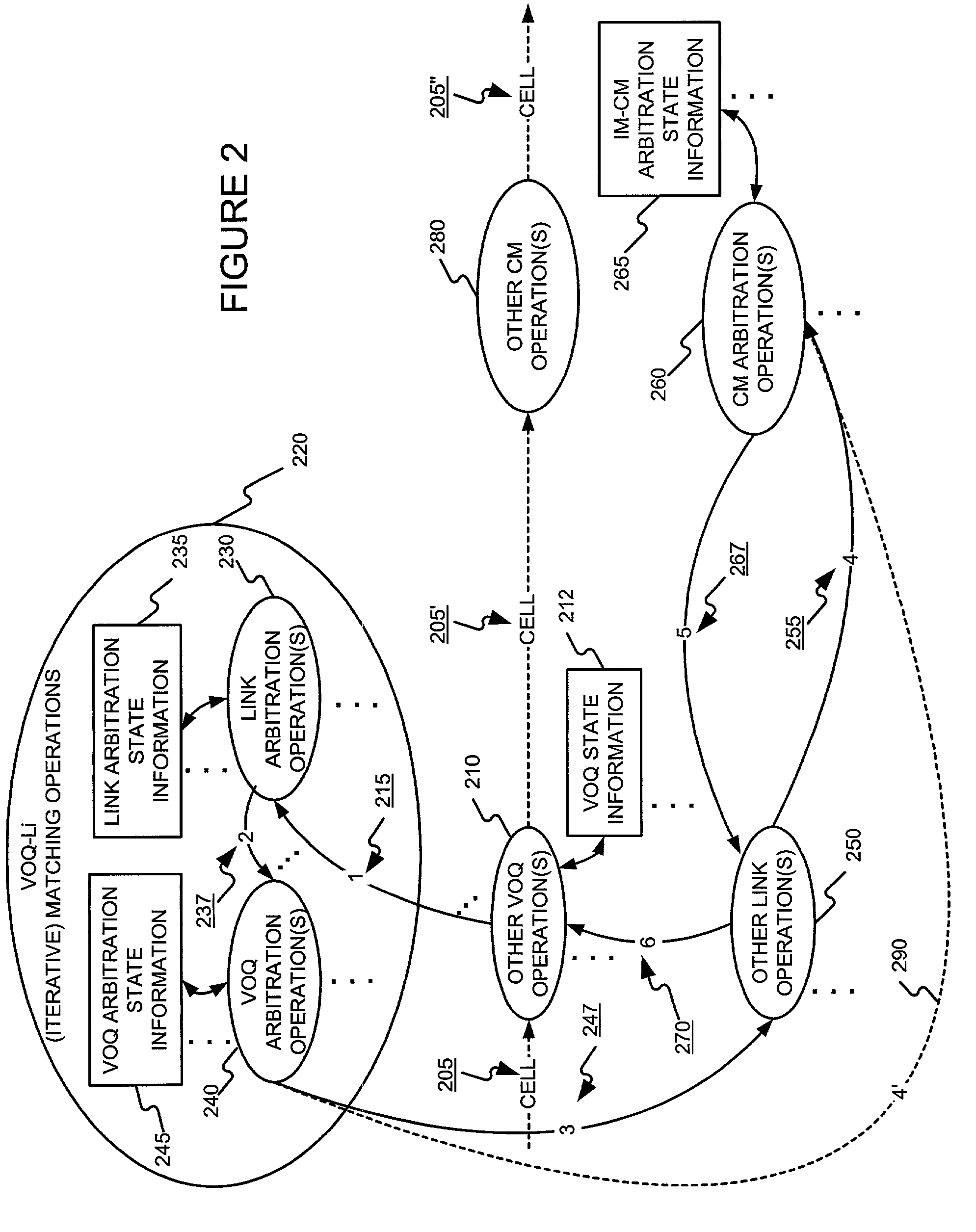Scheduling the dispatch of cells in multistage switches
a multi-stage switch and cell technology, applied in data switching networks, time-division multiplexing selection, multiplex communication, etc., can solve the problems of increasing costs, requiring even more speedup, and cell out-of-sequence, so as to avoid the speedup of the switch fabric, the effect of high throughpu
- Summary
- Abstract
- Description
- Claims
- Application Information
AI Technical Summary
Benefits of technology
Problems solved by technology
Method used
Image
Examples
Embodiment Construction
[0039]The present invention involves novel methods, apparatus and data structures for dispatching cells or packets buffered at the input port of a multi-stage switch. The following description is presented to enable one skilled in the art to make and use the invention, and is provided in the context of particular embodiments and methods. Various modifications to the disclosed embodiments and methods will be apparent to those skilled in the art, and the general principles set forth below may be applied to other embodiments, methods and applications. Thus, the present invention is not intended to be limited to the embodiments and methods shown and the inventors regard their invention as the following disclosed methods, apparatus and materials and any other patentable subject matter to the extent that they are patentable.
[0040]§ 4.1 Exemplary Environment
[0041]The present invention may be practiced in a multiple-stage switch, such as a Clos-network switch for example. FIG. 1 is a high-l...
PUM
 Login to View More
Login to View More Abstract
Description
Claims
Application Information
 Login to View More
Login to View More - R&D
- Intellectual Property
- Life Sciences
- Materials
- Tech Scout
- Unparalleled Data Quality
- Higher Quality Content
- 60% Fewer Hallucinations
Browse by: Latest US Patents, China's latest patents, Technical Efficacy Thesaurus, Application Domain, Technology Topic, Popular Technical Reports.
© 2025 PatSnap. All rights reserved.Legal|Privacy policy|Modern Slavery Act Transparency Statement|Sitemap|About US| Contact US: help@patsnap.com



